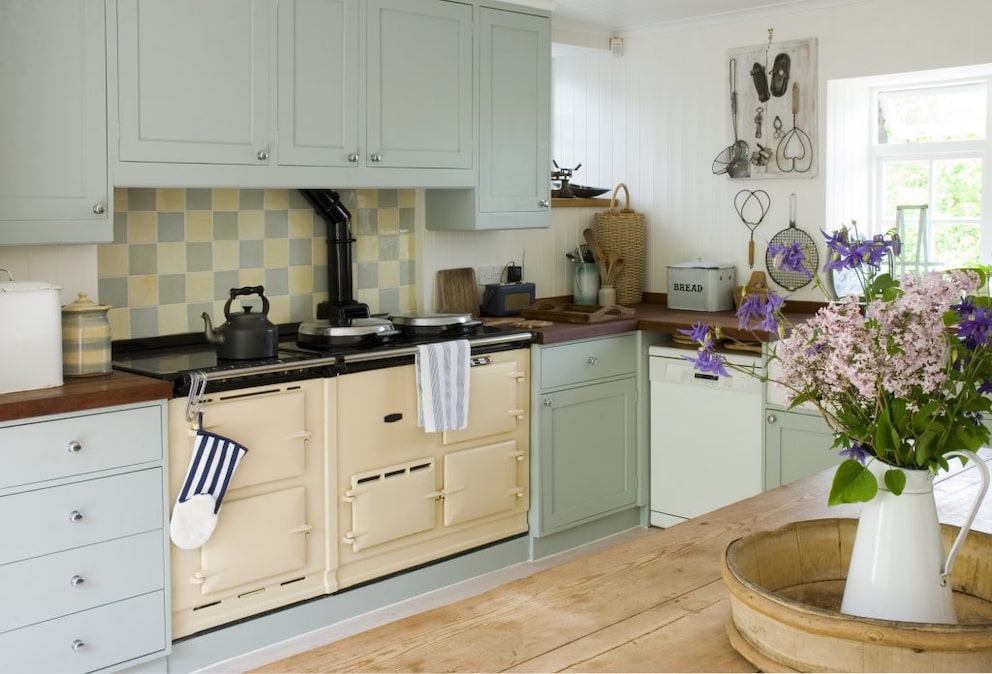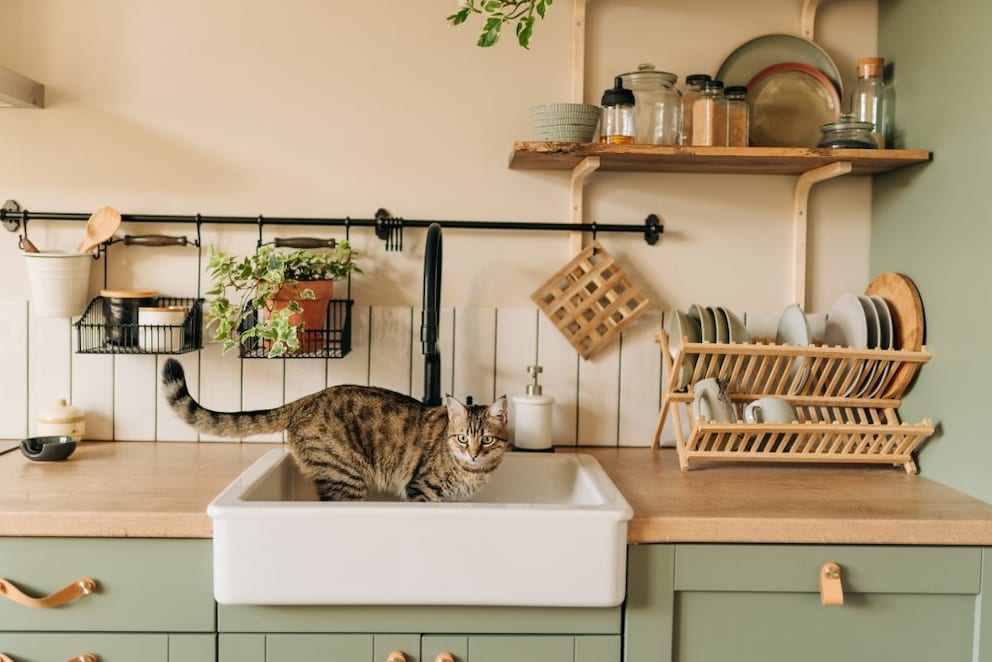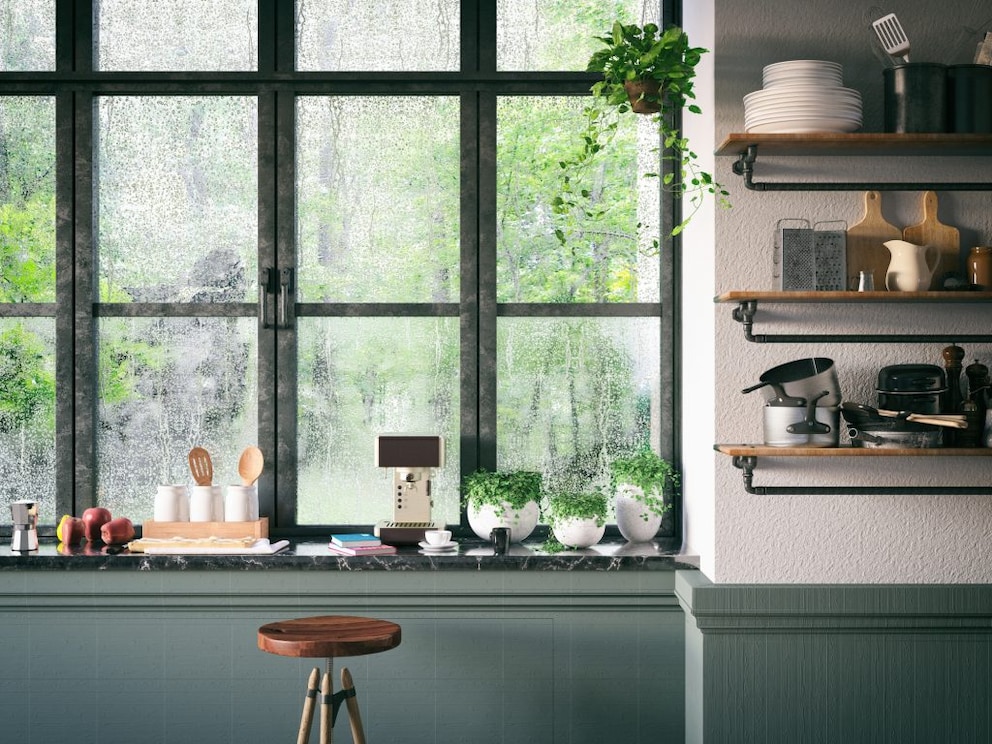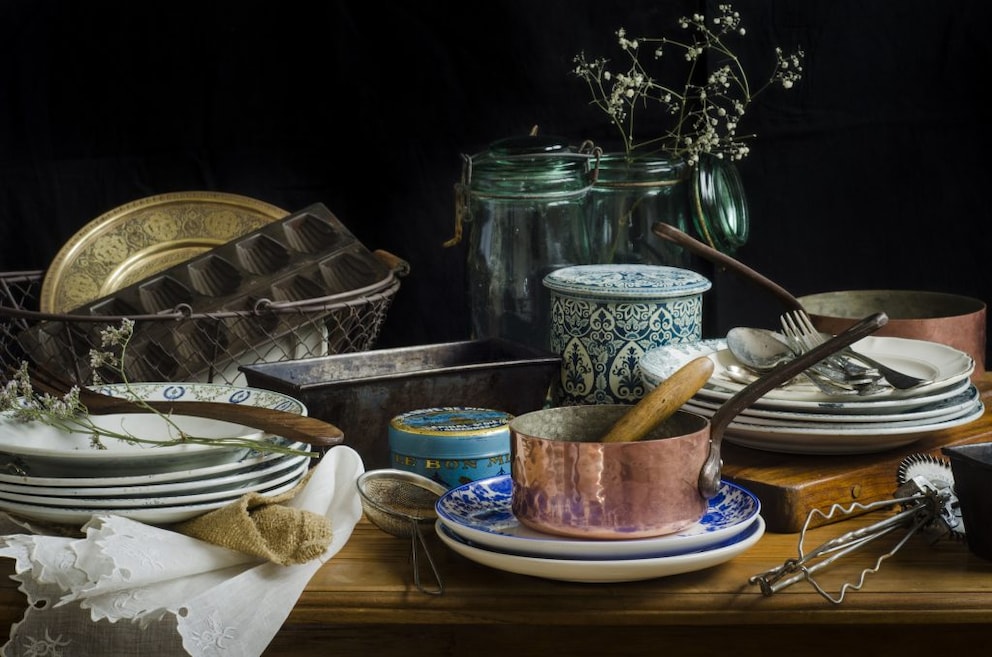April 20, 2025, 12:04 pm | Read time: 4 minutes
The vintage look is trending—even in the kitchen! Interior designer and myHOMEBOOK author Odett Schumann shares how to create a retro kitchen reminiscent of Grandma’s era in this article.
No question, vintage is in! Bringing the charm of past times into the present undoubtedly evokes a pure feeling of coziness. Moreover, this materialized comfort also looks appealing. It’s hardly surprising that vintage is still welcome in our homes. But how do you achieve the look? Let’s start with the vintage kitchen, which is primarily defined by matte colors, numerous details, and a variety of materials.
1. The Color Palette of the Vintage Kitchen
Typical colors for a vintage kitchen are primarily those that are more subdued. With soft natural, pastel, or powder tones like eggshell, light gray, or mint, the color scheme is rather muted, bringing a certain nostalgic charm. You won’t find pure white or bright, bold colors here.

The color palette of a vintage kitchen is characterized more by matte nuances than by high gloss and perfection. In contrast, kitchen appliances in orange, brick red, old rose, or turquoise often stand out with their cheerful colors.
2. Floral Wallpapers and Glazed Tiles
Since the vintage look thrives on a certain playfulness, floral wallpapers on the walls are welcome. These often feature climbing plants with a highly romanticized, intricate design. The counterpart, oversized, opulent flower blossoms that appear almost dramatic, are also a popular choice. As a backsplash, glazed tiles in bottle green, denim blue, or simply a plain cream tone have been making a noticeable comeback in vintage kitchens for some time.
3. Panel Fronts Meet Metal Details
A vintage kitchen stands out in many ways from other styles. Its kitchen cabinets with panel fronts are particularly typical. The upper cabinets often feature an integrated display case, with or without lighting. All cabinet doors are adorned with metal decorative elements such as handles, knobs, recesses, or “shells.” These are often made of brass, silver, or copper, further emphasizing the nostalgic flair of a vintage kitchen.

Harmoniously coordinated, the faucet of the sink is often in one of these metal finishes and is also playfully designed. The countertop is also considered an important style element of the vintage kitchen and is made either of solid wood or natural stone like marble. The noble patina of both materials appears lively, graceful, and authentic. Accordingly, signs of use or a wild grain are almost desired.
4. Small Furniture with a Certain Something

Small furniture like shelves rarely come without embellishments in a vintage kitchen. A shelf board is not simply plain but always features brackets that look turned and have an organically curved shape. Pot holders, kitchen utensils, or dishes like ladles and casseroles are often draped on wall hooks or grid-like hangers over kitchen islands. Today, wall shelves made from old water pipes with solid wood as a shelf are often seen in a vintage kitchen.

The Industrial Style Brings the Loft Aesthetic Home

6 decorative trends for fall 2024 that will make it cozy

Designer reveals the interior trends for 2025
5. The Material Diversity of Accessories
A vintage kitchen is filled with accessories made from a variety of materials. Most cutting boards are made from medium to dark brown woods. Coasters in a vibrant terrazzo look also lean against the wall. The enamel bowl and cast iron roaster perfectly match the rustic glazed clay bowls. Salt and pepper shakers look like small turned artworks.

Two other materials are found in the copper milk jug and clear or slightly tinted glass cups. Textiles often include natural linen and nostalgic lace. Small spice pots on the windowsill provide a special fragrance in the room. Once their herbs are dried, they are processed with a pestle and mortar. Utensils like an old grater or kitchen scale also have a charismatic appeal.

